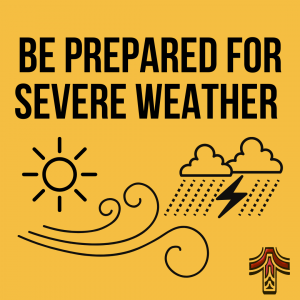- YourGovernment
-
OurCommunity
-
- About Tualatin Advisory Committees Animal Services Community Involvement City Codes City Council City Projects
- Community Crime Reports Customer Service Request Explore Tualatin Now Fire Library Municipal Court Tualatin Today
- Parks & Recreation Passports Permits & Forms Planning & Zoning Police Volunteer Tualatin Moving Forward
-
-
ForVisitors
-
- Parks, Greenways, Recreation and Library Library Parks Public Art Parks and Recreation
- Shopping, Dining, and Entertainment Chamber of Commerce
- Community Events Community Theatre Pumpkin Regatta Special Events
-
- DoingBusiness
-
HowDo I?
-
- Apply for a Job Apply for an Advisory Committee Contact the City Council Get a Copy of a Police Report File a Records Request Find Forms
- Find Planning & Zoning Find Public Transportation Find the City Code Get a Business License Get Email Subscriptions/Notifications Locate City Offices
- Contact the City Pay My Traffic Fine Pay My Water Bill Reserve a Facility Sign Up for a Recreation Program Search the Website Volunteer
-
Severe Weather
Just like emergencies, we should be prepared for unusual or extreme weather.
Check here for up-to-date Weather Watches, Warnings or Advisories for Oregon
Heat
Extreme heat is a period of high heat and humidity with temperatures above 90 degrees for at least two to three days. In extreme heat your body works extra hard to maintain a normal temperature and the danger for heat-related illnesses rises. You can protect yourself and loved ones against very hot temperatures by following these general recommendations:
-
Stay Cool - Stay out of the sun/seek shade, find air conditioning, cover bright windows, wear loose clothing and wide-brimmed hats, take a cool shower/bath, avoid strenuous activities, rest often, etc.
-
Visit a local cooling center
-
-
Check on family members and neighbors!
-
Drink plenty of fluids - Drink water even if you don’t feel thirsty! Avoid alcohol and sugary drinks.
-
Watch for heat cramps, heat exhaustion and heat stroke - printable symptoms sheet here.
-
Take care of your pets - don't leave them in a vehicle, give them plenty of fresh water, and bring them inside or give them shade.
More information and resources:
- State of Oregon Extreme Heat
- Extreme Heat from Ready.gov (Espanol)
- Extreme Heat from the CDC (Espanol)
- 5 Reasons Why Hot Weather Raises Alarms
COLD
During cold weather, staying warm and safe can be a challenge. Winter storms can bring extreme cold, freezing rain, snow, ice, and high winds. Learn how to prepare for winter weather, prevent cold temperature-related health problems, and protect yourself and loved ones and follow these general recommendations:
-
Pay attention to weather reports and warnings.
-
Check on family members and neighbors!
-
Learn about hypothermia and frostbite - printable symptoms sheet here.
-
Prepare your home and vehicle for winter weather.
More information and resources:
- State of Oregon Winter Weather
- Winter Weather from Ready.gov (Espanol)
- Winter Weather from the CDC (Espanol)
Wind
Every fall and winter, windstorms cause extensive damage, including the loss of electricity throughout the Pacific Northwest. By taking action now, you can save lives and reduce the damage caused by windstorms and other weather-related hazards.
More information and resources:
- State of Oregon Windstorms
- Types of Damaging Winds from The National Severe Storms Laboratory
Flooding
Floods are one of the most common hazards in the U.S. All floods are not alike. Some floods develop slowly, sometimes over a period of days. But flash floods can develop quickly, sometimes in just a few minutes and without any visible signs of rain.
More information and resources:
- City of Tualatin Flood Information
- State of Oregon Prepare for Flooding
- Flooding from Ready.gov (Espanol)
- Floods from the CDC
DAMAGE TO STREET TREES
Following a severe weather event, our team inventories damage to street trees throughout the city and removes hazards. If no hazard is present, removal, maintenance, and replacement of street trees is the responsibility of the adjacent property owners. We determine whether something is a hazard based on whether broken limbs are hanging above 25’ and could harm vehicles or pedestrians below.
Residents and business owners with damaged or fallen trees may take immediate removal actions necessary to prevent injury or property damage and to restore order without a tree permit. However, residents must follow the instructions below and review important safety considerations here.
- If you need to cut down/remove a street tree due to storm damage
- Please submit a "Street Tree Removal Permit" application, found here (scroll to bottom of the page). You do not need to wait for approval to proceed with removing the damaged/dangerous tree. We will be in touch with you about replacement when we are able. Please include photographs of the tree(s) prior to removal.
- If you have already cut down/removed a street tree due to storm damage
- Please submit a "Street Tree Removal Permit" application, found here (scroll to bottom of the page). This will ensure that the City has a record of the tree being removed and can be in contact with you about replacement when we are able. If possible, please include photographs of the tree(s) prior to removal.

